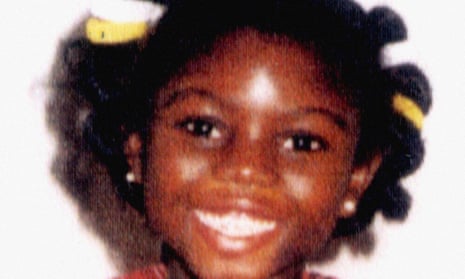Twenty years ago, Britain was confronted with the horror of what can happen when the child protection system fails. Victoria Climbié, a “happy, smiling, enthusiastic little girl”, was tortured to death over a period of months by her relatives, in the worst-ever case of child abuse the professionals who investigated her death had seen. The government ordered an inquiry into how she was failed so monumentally by the professionals whose job it was to understand the danger she was in. Lord Laming, its chair, wrote that he hoped that the memory of Victoria would act as “a beacon pointing the way to securing the safety and wellbeing of all children in our society”.
Many changes have been made in the years since that report was published. Yet children still lose their lives in the most horrific of circumstances as a result of abuse and neglect. Last year, convictions were secured for the dreadful murders of six-year-old Arthur Labinjo-Hughes and 16-month-old Star Hobson. Just in the last week, a court found that five-year-old Logan Mwangi had been murdered by his mother and stepfather, and the mother of seven-year-old Hakeem Hussain was convicted of his manslaughter. Logan suffered a “slow and painful death”, after months of abuse and being imprisoned in a dungeon-like bedroom. Hakeem endured abject neglect from a mother with a drug addiction problem and suffocated to death in freezing conditions during an asthma attack while she was high on drugs.
Like Victoria, they all lost their lives as a result of serious failures in child protection. Logan’s teachers noticed worrying changes in his appearance and demeanour in the weeks before his death; social workers and the police knew of his injuries and of death threats against him from the teenager involved in his murder. His stepfather already had convictions for assaulting a child. Hakeem had been subject to a child protection plan before his death and a few days earlier a nurse at his school had predicted he would die if action was not taken to protect him; his three half-siblings had already been removed from his mother’s care.
There were 206 serious safeguarding incidents that involved child deaths in England in 2020. Fifty-six of these deaths occurred as a result of filicide, physical abuse or cruelty or involved maltreatment. Child abuse and neglect are not one-off incidents, but patterns of behaviour that produce tell-tale signs that a child is at serious risk. More of these deaths should be preventable through a well-functioning child protection system.
Resourcing has clearly been an issue in the past decade as a result of government cuts and rising costs, driven in large part by the privatisation of children’s care. It is much harder for a social worker to make accurate risk assessments when they are responsible for more than 30 children each, as they are in some areas.
But it goes beyond insufficient resourcing. There is no decision more complex or intrusive that the state takes in relation to children than the point at which they should be taken into care. It is unbearably high stakes: leave a child in the care of abusive or neglectful parents and they may suffer terrible harm. It is made harder by social workers’ dual role. Their job is to support vulnerable families to provide the best environment possible for their children. But they are first and foremost an advocate for children, which can require them to investigate families and take tough decisions in the interests of children but not the parents they also care about.
As the Laming inquiry highlighted, abusive parents can be highly deceptive when it comes to covering up the harm they cause their children and children have died in cases where social workers have been too ready to believe parents and focused on the parent’s need at the expense of the child’s. This makes children’s social work one of the most highly skilled and demanding of public service professions. We should be investing far more in training and developing the people whose responsibility it is to keep vulnerable children safe.
Of course, it would be better if there were fewer children in care because more parents can care for their children safely. The experience of a local authority such as Leeds, which has reduced the number of children in care over a decade through providing support for at-risk families, show that this is possible, though it requires significant investment and outstanding leadership, scarce resources in a system where there are too many failing social services departments. But the cart cannot come before the horse. The evidence suggests that a timely move into care is associated with better outcomes for children at risk of neglect and abuse. Yet there is a dangerous narrative in some parts of children’s social care that the system is too quick to take children into care where there is no serious risk of harm.
There is little evidence to suggest that this is the case, but one reason this sticks is because parents who feel they have been wrongly investigated by social services form a more powerful constituency with a louder voice than the children whose abuse and neglect is allowed to persist. The deaths of Hakeem Hussein and Logan Mwangi are the latest alarms that there is something seriously amiss with the child protection system in this country. Two decades after Victoria Climbié was murdered, we remain a long way from securing the safety and wellbeing of every child growing up in Britain.
